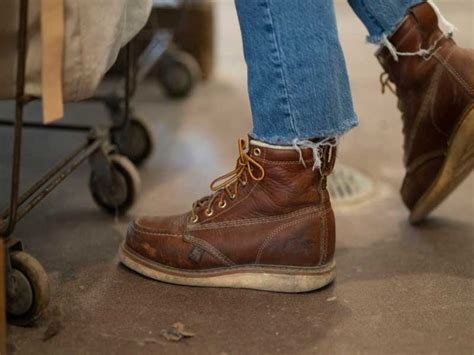Best Warehouse Work Boots

When it comes to warehouse work, having the right footwear is crucial for both safety and comfort. Warehouse work boots are designed to protect your feet from various hazards, including heavy objects, slippery floors, and electrical hazards. In this article, we’ll delve into the world of warehouse work boots, exploring the key features, benefits, and top recommendations for the best warehouse work boots.
Understanding the Importance of Warehouse Work Boots
Warehouse work involves a range of activities, from manually handling goods to operating machinery. Each task poses unique risks to foot safety, making it essential to wear boots that are specifically designed for warehouse work. These boots are engineered to provide protection against common workplace hazards, including:
- Slip Resistance: To prevent slips and falls on potentially oily or wet floors.
- Electrical Hazard Protection: To safeguard against electrical shock from live circuits or equipment.
- Compression and Impact Protection: To shield the feet from heavy objects that might fall or from compressive forces when stepping on sharp objects.
- Ankle Support: To prevent twists and sprains, common in fast-paced warehouse environments.
Key Features of Good Warehouse Work Boots
When selecting the best warehouse work boots, several features should be considered to ensure they meet the demands of your job and provide the necessary protection and comfort:
- Material: Boots can be made from leather, synthetic materials, or a combination of both. Leather boots are durable and resistant to abrasion, while synthetic boots are lighter and may offer better resistance to certain chemicals.
- Water Resistance: For warehouses where water or chemicals might be present, boots with a waterproof membrane can keep feet dry and comfortable.
- Insulation: For cold warehouses, insulated boots can keep feet warm. Conversely, breathable materials are essential for warmer environments to prevent overheating.
- Slip-Resistant Outsole: A good grip is critical to prevent slips and falls. Look for boots with outsoles specifically designed for the types of floors found in your warehouse.
- Safety Toe: A steel, aluminum, or composite toe cap protects the toes from heavy objects. The choice between these materials depends on the specific hazards in your workplace and personal preference regarding weight and conductivity.
- Comfort Features: Adequate cushioning, arch support, and a comfortable fit are essential for reducing fatigue during long shifts.
Top Recommendations for Warehouse Work Boots
Given the variety of tasks and environments within warehouses, the best boots for one worker might not be the best for another. However, some boots stand out for their excellent balance of safety features, comfort, and durability:
- Thorogood Men’s American Heritage: Known for their comfort and support, these boots feature a slip-resistant outsole and a protective toe cap, making them suitable for a wide range of warehouse tasks.
- Dr. Martens Ironbridge: Offering excellent ankle support and a slip-resistant sole, Dr. Martens boots are popular for their comfort and durability, even in challenging warehouse environments.
- New Balance Work: New Balance brings their expertise in footwear to the workplace with boots that offer superior comfort, arch support, and a protective toe, making them ideal for workers who are on their feet all day.
- Timberland Pro: Timberland Pro boots are designed with the worker in mind, featuring anti-fatigue technology for comfort, slip-resistant outsoles, and protective toe caps for safety.
Conclusion
The right pair of warehouse work boots can make a significant difference in your daily work experience, providing protection, comfort, and support. By understanding the hazards of your specific work environment and matching them with the appropriate features in a boot, you can ensure your feet remain safe and comfortable throughout your shift. Whether you prioritize slip resistance, electrical hazard protection, or comfort, there’s a pair of warehouse work boots designed to meet your needs.
FAQ Section
What are the most common hazards in a warehouse that work boots protect against?
+Common hazards include slipping on oily or wet floors, electrical shock from equipment, and impact from heavy objects falling. Work boots are designed to protect against these hazards with slip-resistant soles, electrical hazard protection, and sturdy toe caps.
How often should warehouse work boots be replaced?
+The frequency of replacing warehouse work boots depends on usage and condition. Generally, if the soles are worn down, the protective toe cap is compromised, or the boots no longer provide adequate support and comfort, it's time to consider replacing them. This can be every 6 months to a couple of years, depending on how heavily they are used.
What features should I look for in warehouse work boots for cold warehouses?
+Given the critical role that warehouse work boots play in both safety and job performance, investing in a high-quality pair is essential. By considering your specific work environment, the tasks you perform, and the features that matter most to you, you can choose the best warehouse work boots for your needs. Whether you’re working in a bustling distribution center or a manufacturing facility, the right boots can make all the difference in your comfort, safety, and overall well-being.



